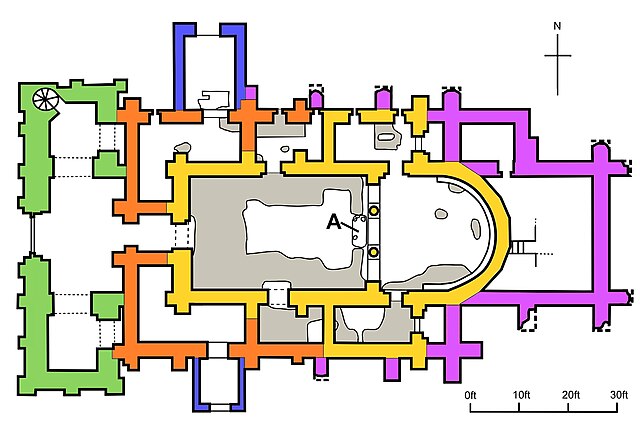Top Qs
Timeline
Chat
Perspective
Porticus
Architectural element From Wikipedia, the free encyclopedia
Remove ads
In church architecture, a porticus (Latin for "portico")[a] is usually a small room in a church.[2] Commonly, porticuses form extensions to the north and south sides of a church, giving the building a cruciform plan. They may function as chapels, rudimentary transepts or burial-places. For example, Anglo-Saxon kings of Kent were buried in the south porticus at St Augustine's Abbey in Canterbury, with the exception of Eadberht II, who was buried in a similar location in St Mary's Church, Reculver.[3]

This feature of church design originated in the late Roman period and continued to appear in those built on the European continent and, in Anglo-Saxon England, until the 8th century.[4]
Remove ads
Notes
- Most Latin terms ending in -us are masculine and form their nominative plural with -i but porticus is a feminine fourth-declension noun whose plural is also porticus, sometimes differentiated with a macron as porticūs.[1] The English plural form is porticuses, when the term is not simply translated as portico.
References
Wikiwand - on
Seamless Wikipedia browsing. On steroids.
Remove ads
